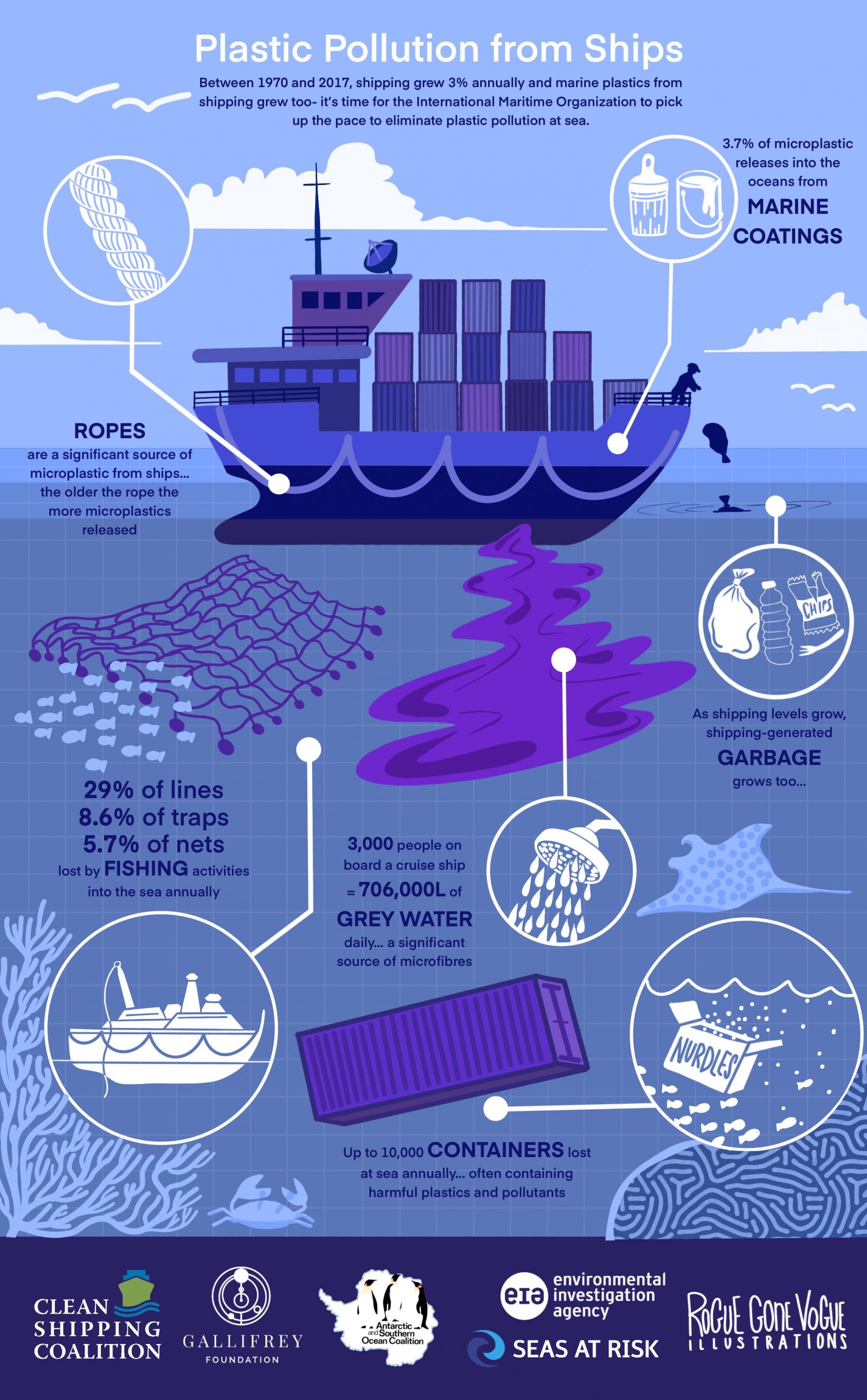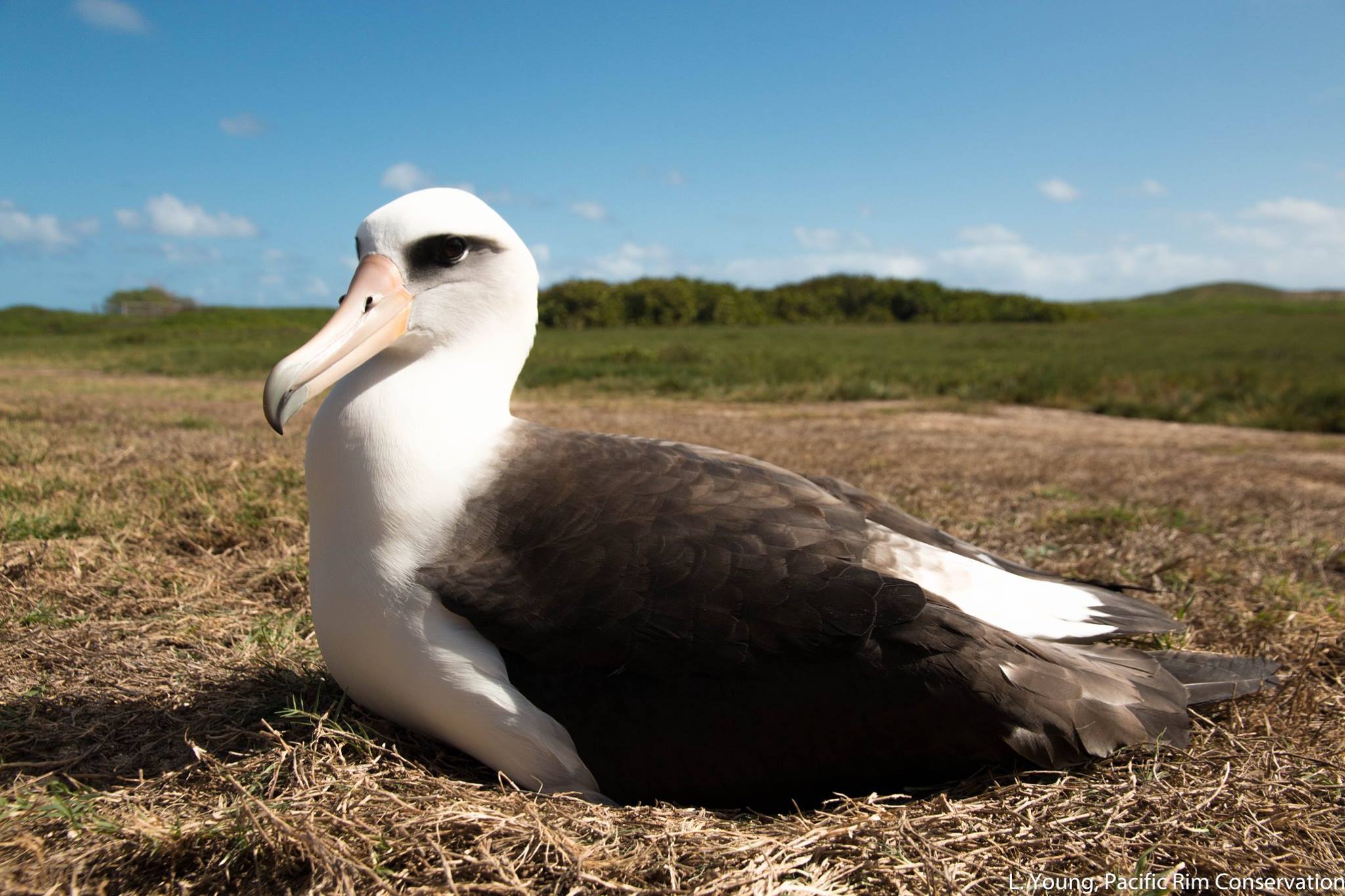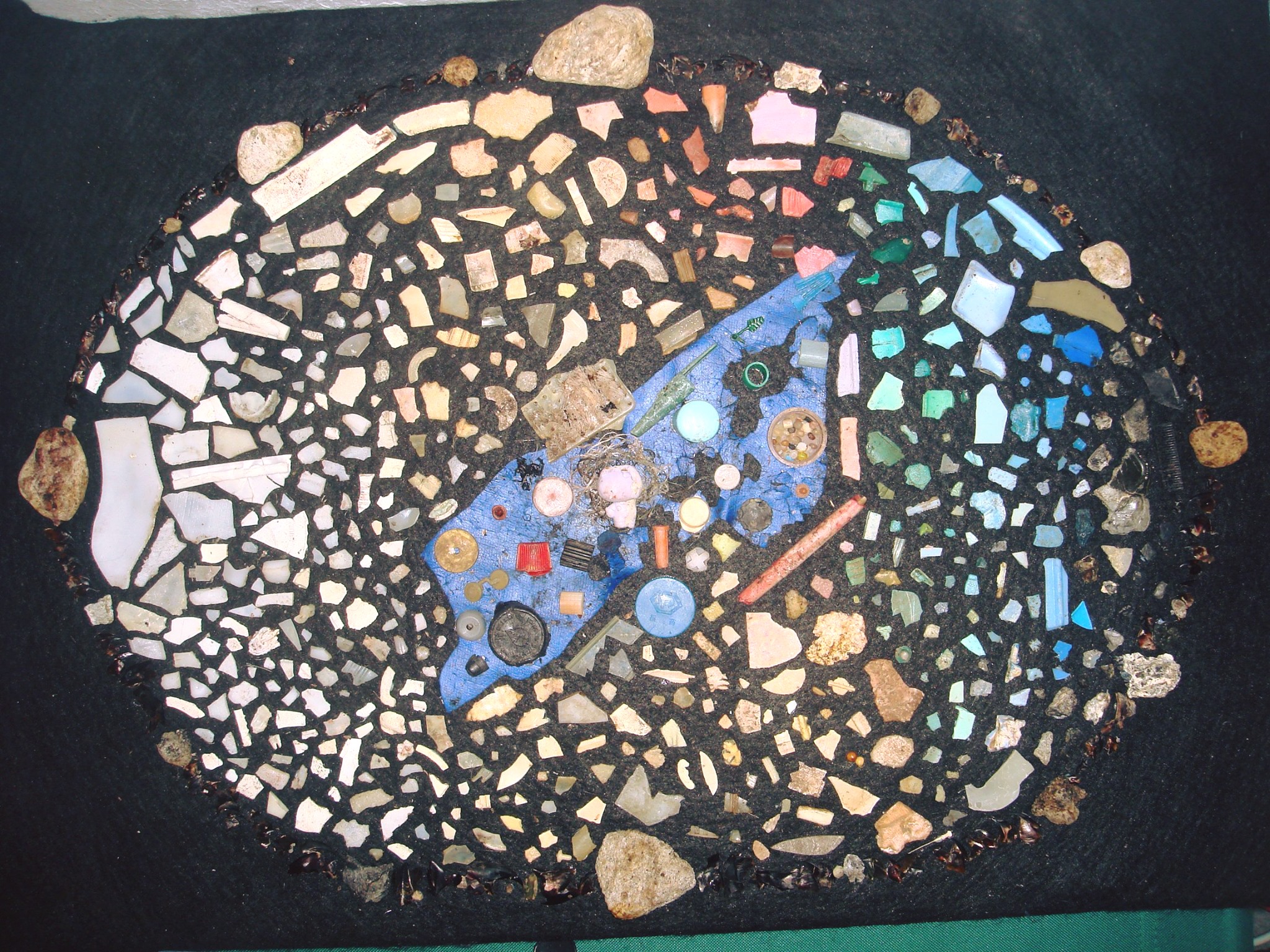 The Antarctic and Southern Ocean Coalition's newly released Plastic Pollution from Ships infographic
The Antarctic and Southern Ocean Coalition's newly released Plastic Pollution from Ships infographic
A new infographic drawing attention to plastic pollution in the Antarctic and Southern Ocean from the shipping industry, including fisheries, has been released by the Antarctic and Southern Ocean Coalition (ASOC). Nets, fishing lines and traps are possibly the most obvious sources of plastic waste from fishing activities, but ASOC highlights numerous sources of marine plastics including, garbage generated on-board ships, micro-fibres from grey water waste, micro-plastics leached into the ocean from use in marine coating products, and the plastics found in containers lost overboard. The infographic is one of a series with a previous poster highlighting the threats to marine life and the wider environment posed by abandoned, lost or discarded fishing gear (ALDFG) or ghost fishing gear. ASOC's infographics are available to download at their website.
Marine life including marine animals such as seabirds, are navigating waters increasingly polluted with plastic waste. A report from the Organisation for Economic Co-operation and Development (OECD) found that plastic consumption has quadrupled over the last three decades with production of plastics doubling between 2000 and 2019 to reach 460 million tonnes (Mt). Only 6% of global plastic production originates from recycled or secondary plastics and it is estimated that a staggering 30 Mt of plastic waste is currently present in the world’s seas and oceans. The United Nations has predicted that by 2050 there could be more plastic in the world’s oceans than fish.
To raise awareness of this serious and growing issue, ACAP has chosen Plastic Pollution as the theme for 2023’s World Albatross Day (WAD2023). Whether ingested and then fed to chicks or causing entanglements, plastics pose a significant threat to albatrosses. However, pollutants in the marine environment are not limited to plastics, with exposure to heavy metals, (such as mercury) and POPs (persistent organic pollutants, such as insecticides) also presenting problems for this incredible species and therefore will be included in World Albatross Day’s 2023 campaign.
 A Laysan Albatross incubating its egg; photograph by Lindsay Young
A Laysan Albatross incubating its egg; photograph by Lindsay Young
Each year ACAP features particular albatross species in artworks, posters and infographics to promote World Albatross Day. Of the four species chosen for 2023, two species in particular underscore albatrosses plight with plastic: the Black-footed Phoebastria nigripes and Laysan P. immutabilis Albatrosses of the North Pacific, which are known to ingest more plastic than the southern hemisphere species. The globally Endangered Northern Royal Albatross D. sanfordi, endemic to New Zealand and the abundant and widespread Black-browed Albatross Thalassarche melanophris will also feature in the World Albatross Day campaign for 2023.
 A mural of the plastic load found in the stomach contents of a Laysan Albatross chick that died a month before it would have fledged; artwork and photograph by Sheldon Plentovich
A mural of the plastic load found in the stomach contents of a Laysan Albatross chick that died a month before it would have fledged; artwork and photograph by Sheldon Plentovich
Follow us on Facebook and Instagram to keep up to date with our World Albatross Day campaign and all ACAP news.
14 October 2022

 Español
Español  English
English  Français
Français